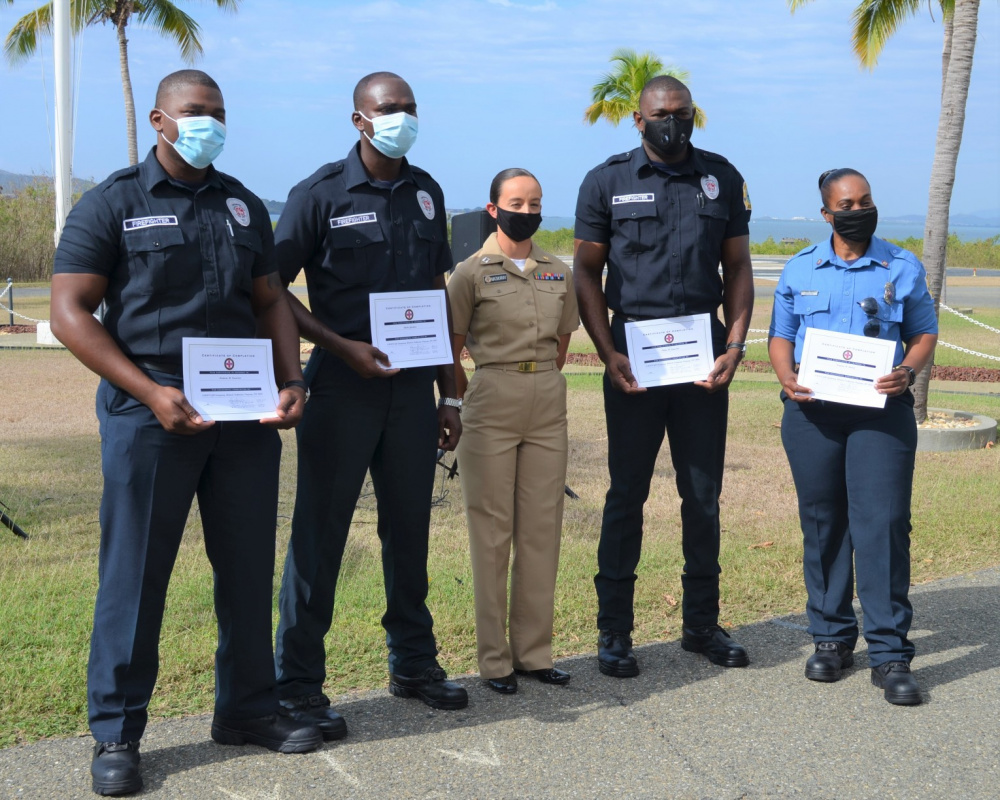
Emergency medical calls at the Naval Station in Guantanamo Bay (NSGB) in Cuba will now be answered by firefighters who have received training beyond that provided to the emergency medical responders at the Fire and Emergency Services dispatch center who have previously handled emergency calls. These responders and the NSGB Fire Department have started to train together to obtain certification as Emergency Medical Technicians (EMTs). What is especially notable is that the entire operational staff, outside of the Fire Department’s assistance chiefs, are all foreign nationals from Jamaica.
Prior to the new arrangement, first responders to medical emergencies at NSGB included Emergency Medical Responder Firefighters who were assigned to one of four stations and dispatched together with two Corpsmen from the Naval Medical Readiness Training Command Guantanamo Bay, Emergency Department (NMRTC GB, ED). These two entities serviced the entire installation, which consists of about 6,000 residents of different cultures and included Jamaican, Philippines, and United States nationals.

In February 2021, four NSGB firefighters became the first foreign nationals to participate in the credentialed National Registry of Emergency Medical Technicians course taught by nurses, physicians, specialists, and other NMRTC GB paramedics from various base commands. Lt. Krista MacMurray, USN, a nurse assigned to NMRTC GB ED was in charge of teaching the class for the third time. MacMurray said the class was really unique because the firefighters had only received Emergency Responder Training, and she also decided to review all lessons and drills to ensure there was no language barrier. She found the Jamaican trainees exceptionally motivated and said they all excelled in spite of the additional challenges they faced on top of the usual rigorous course requirements.
There are six areas in which the students are drill tested. These include Patient Assessment / Management Trauma; Patient Assessment / Management Medical; Ventilation of an Adult Patient with Difficulty Breathing; Oxygen Administration by a Non-Rebreather Mask; Cardiac Arrest Management with an Artificial External Defibrillator; Supine Spinal Immobilization and one of Bleeding Control /Shock Management, Joint Immobilization, Seated Spinal or Long Bone Immobilization. At the end of the course is a written final exam consisting of 150 questions, which must be passed to obtain the EMT certification.
The pilot program has been so successful that the overall scores on the final examination were higher than those of any previous EMT classes conducted at NSGB, said Lt. Jg. Elizabeth Abimbola, the department head of Staff Education and Training at NMRTC GB. The class “was clearly committed to learning,” she added. “They really wanted this certification, and it showed in their test scores.”
Photo Source: DIVIDS







